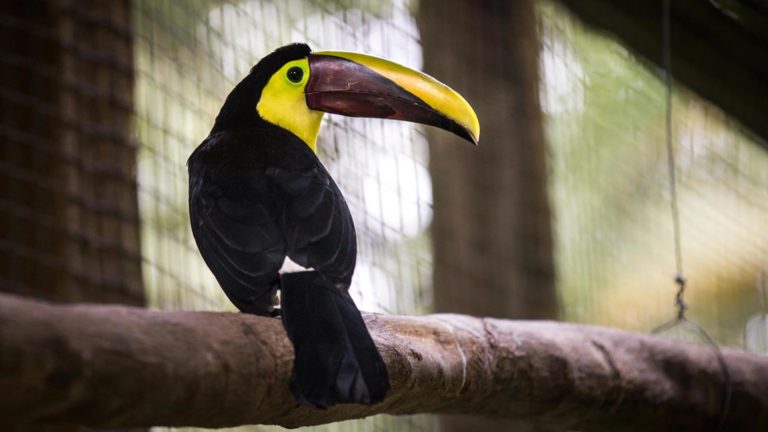Black Mandible Toucan Ramphastos ambiguus
Taxonomy
Scientific name:
Ramphastos ambiguus
Family:
Ramphastidae
Genus:
Ramphastos
Species:
Ambiguus
Common names:
Black mandible toucan, chestnut mandible, choco toucan, yellow-throated toucan
Biology
Morphology:
Black mandible toucans have massive, brightly marked bills that can grow up to 20 cm long. The bicolored bill is mostly bright yellow above while the base of the bill is dark red turning into dark maroon color and blackish towards the tip of the lower bill. The plumage is mainly black with hints of maroon on the head, upper back and lower chest. The face, throat and upper chest are bright yellow bordered by a narrow white line followed by a broader red band. The rump is white and the lower abdomen and lower tail feathers are red.
Reproduction:
Breeding mostly occurs from early April to early June. Black mandible toucans rely on existing cavities to nest as they are not suitable for excavating holes. They lay 2 to 4 eggs which are incubated by both parents in 17 to 19 days. The young fledge when they are about 5 to 6 weeks old. Both parents share in feeding fruit to the babies for up to 9 weeks.
Diet:
Feeds primarily on fruits, although sometimes will feed on other bird’s eggs and small animals.
Ecology
Range:
From Honduras to the Pacific Coast of Colombia and Ecuador.
Habitat:
This species prefers higher grounds and vegetation.
Threats
Deforestation is the primary threat. IUCN Red List: Near threatened.

